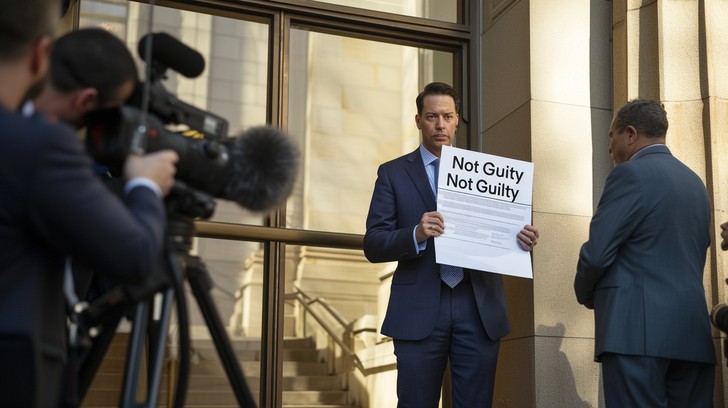Now Reading: Advertising Laws in India
-
01
Advertising Laws in India
Advertising Laws in India
INTRODUCTION:-
Advertising are at heart of commercial speech, which the Supreme Court has held is a part of Freedom od speech and Expression , Fundamental Right under article 19(1)(a) of the Constitution of India. Advertising is one of the means of mass communication along with other means of publicity ,sales promotion and public relations indeed without its services in communicating with public, many industrial and business firms would be forced to shut up, their employers would be thrown out of the work and on economy would collapse definition advertising. It presents the most persuasive possible selling at the lowest cost which means it is actually a promotional message and a selling idea.
While there are several legislative provisions ,there is no uniform code of law that deals and covers all aspect of advertising . The industry has so far resisted attempts to create a uniform advertisement code or single regulator.. India like several other jurisdictions , prefer Self regulations laws for advertisements. Self -regulation Laws refer to the standard and code that provide guidelines for the ethical and professional conduct in advertising. These codes have been laid down by various authorities such as – Advertising Standard Councils of India.(ASCI) , Advertising Agencies Association of India (AAAI) , Indian Newspaper Society (INS) Doordarshan which are adopted to guide Advertisers, Advertising Agencies, Public Sector, publication and Media.
The ASCI while is a self-regulatory body, The Reserve Bank of India (RBI), The Securities and Exchange Commission of India (SEBI), and the Insurance Regulatory Development Authority of India (IRDA) regulate advertisement in their respective sectors. Stare- owned broadcasters Doordarshan and All India Radio (AIR) is under the control of Parser Bharti ( government owned public broadcasting agency ) formulated under this act . The Department of Consumer Affairs also maintain an online portal where consumers can post their grievances against misleading advertisements.
Main Highlights:-
1. Unethical Advertisement should be avoided.
2. Consumers are protected against the misuse of truthful Advertisement
3. Decency is maintained by avoiding offensive and vulgar Advertisement
4. Advertisement that might result in mental, physical or moral harm to children are banned.
5. Healthy and fair competition is generated in the market among different sellers.
6. Self regulations laws make advertiser , Advertising agencies and media more responsible in carrying out their duties.
7. The code applies to all Advertisement irrespective of whether they appear on television, radio, hoardings etc.
8. Media owner should refer an advertise to ASCI if the advertise is in contravention of code. For example UBER’S Advertisement stating “ you drink we drive” was considered to promote alcohol drinking.
OBJECTIVES:
1. To ensure truthfulness and honesty in the representation and claims of advertisers.
2. To ensure that Advertisement are not offensive to the public
3. To safeguard against the indiscriminate use of Advertising product which are hazardous towards the society.
4. To ensure advertisers observe fairness in competition.
LAWS AND ACT GOVERNING ADVERTISEMENT
Advertising in india has seen the vast transformation .From the Doordarshan and Prasar Bharti way of advertising to the modern television channel and media, however with increasing misuse ,such as promoting a prohibited medicine , promotion of alcohol ,forced the government to pass several laws to keep in check such Advertisement . Legislation that are responsible for controlling misleading Advertisement are:-
1. CONSUMER PROTECTION ACT ,1986 AND ADVERTISING:- Under this act , section 6 talks about the right to inform about the quality , quantity,potency,purity, etc to protect unfair trade and practice .While section 2(r) of the act define unfair trade practise which covers the gamut of false Advertisement and false allurement.
2. CABLE TELEVISION REGULATIONS ACT,1995,CABLE TELEVISION AMENDMENT ACT ,2006:- Under section 6 of the act, says that no person will transmit through cable service Advertisement unless Advertisement is in conformity with Advertisement code. Under rule 7 it ensures that Advertisement code should not offend the morality, decency and religious aspect of the people.
3. RESTRICTION ON ADVERTISING UNDER THE CIGARETTE AND TOBACCO ACT,2003:-Section 5 of this act prohibits both direct and indirect Advertisement of tobacco products in all forms of audio , visual media.
4. ADVERTISING REGULATIONS UNDER DRUG AND MAGIC REMEDIES ACT ,1954 AND DRUGS AND COSMETIC ACT 1940:- Under section 29 it imposes a penalty who use report of a test or analysis made by the Central Drugs Laboratory for purpose of Advertising any drugs .The punishment prescribed for such an offense is fine upto five hundred rupees and imprisonment upto 10 years.
5. ADVERTISING RESTRICTIONS UNDER PRENATAL DIAGNOSTIC TECHNIQUES ( REGULATION AND PREVENTION OF MISUSE ) ACT 1994.YOUNG PERSON ( HARMFUL PUBLICATION ACT 1956)- Advertising regarding prenatal determination of sex available in genetic counselling centre , laboratory is prohibited under this act. While section 3 of the young person ,imposes penalty for Advertising making harmful publications.
6. The INDIAN PENAL CODE AND CRIMINALITY OF ADVERTISEMENT:-Advertising related to offence, hiring of contract killer or inciting violence , terrorism is legal and punishable under Indian Penal Code.
7. TRANSPLANTATION OF HUMAN ORGAN ACT ,1994:- Under this act it disallows any publication or Advertising of any sort of human organ and control evaluation , stockpiling and transplantation.
The courts have over the year weighed in on what is acceptable for Advertisements. In landmark case of Tata press Ltd v Mahanagar Telephone Ltd (MTNL) , the Supreme Court considered if Tata Press was permitted to publish telephone directories and sell Advertisements in its yellow pages. The court while equating Advertisements or commercial speech to the Fundamental Right of speech as enshrined in the Constitution ,held that the protection has been accorded to corporate entities as well.
In another case Bennett Coleman and co and ors vs Union of india (1972) which challenged the restrictions on the import of newsprint under Import Control Order,1955 the Supreme Court held that Fundamental Right of share holder as citizens are not lost , when they associate to form s company.
In Havells India vs Amritanshu kaitan (2015), the court considered that Advertisement that compares a products with similar rival products must necessarily compare all its features in order for it to be a honest Advertisement.
In case of comparative Advertising courts have said that a certain amount of disparagement is implicit in Advertisement ,as held in a series of judgment including De Beers Abrasive vs International General Electric (1975) Dabur vs Colortek (2010), GSK vs Heinz India (2010), Colgate Palmolive vs Hindustan Unilever (2014)
ADVERTISING STANDARDS COUNCIL OF INDIA BANNED ADVERTISE-
Advertising sector watch dog (ASCI) has upheld complaints against 200 misleading Advertisement including Hindustan Unilever Ltd ,Dabur India, Uber, Hindustan Petroleum .
• The consumer Complaint Council(CCC) claims of Hindustan Unilever ltd (HUL) for its lever ayush soap saying based on 5000 years old Ayurveda scriptures with 15 Ayurveda herbs, besides other claims were inadequately substained .
• Shahrukh khan promotes a fairness cream to build trust in consumers for the brand or product . Madhuri Dixit feeding instant noodles to her kids as a healthy snack makes the customer believe on the product. When a product is endorsed by a celebrity ,it increases the products sales volume due to their influence, even when viewers are aware that jt may be no more than a marketing gimmick and that celebrity may not use the product in reality .
Though there are no stringent laws in india which make the celebrities endorsing the product for misleading Advertisement, a consumer can bring an action towards the celebrity promoting any food product under section 24 of Food Safety and Standards Act,2006.
• Beganin Caraethes brought an case against Australian Drink Company .He said he is a regular consumer of Red Bull for 10 years,but has not developed any wings or shown any signs of improved intellectual or physical abilities as the tagline of the product suggest “Red Bull gives you Wings”.
• In 2014 , Cosmetic Company L’Oréal was forced to admit that L’Oréal Paris Youth Code Skincare products were not clinically proven to boast genes and give visibly young look and so was banned from making claims about the products without scientific evidence .
• In 2013, UK supermarket claim Tesco was criticised for misleading Advertisement campaign in the awake of its horse meat scandal according to the telegraph. The UK Advertising Regulator (ASA) has to banned the campaign.
• One of the sneaker named ,New Balance has sold with claims to help the consumer to burn their calories . No Act of Advertising laws confirmed that and the shoe turned out to be an injury hazard
Conclusion:-
At present there are numerous regulations monitoring the display of obscene and misleading Advertisement in India .In reality most of the Advertisement are ignored by the consumer and go unnoticed by the Statutory Bodies so in order to enforce the regulations , the need of hour is whenever an advertisement breaches public confidence ,the Regulators should take immediate actions.The proposed Broadcasting Bill,2007 is expected to bring a major change in the mechanism of Advertisement. The need for a Uniform Statutory Framework Regulating advertisement has become more urgent, and hoped that plea for such codification of advertising laws would soon be acknowledged by the Nation’s Legislature.
Footnotes:-
1995 AIR 2438, 1995 SCC (5) 139
1973 AIR 106 1973 SCR (2) 757
1972 SCC (2) 788
2015 (62) PTC 64 [Del]
REFERENCES:-
https://www.constitutionofindia.net/constitution_of_india/fundamental_rights/articles/Article%2019
http://www.ibfindia.com/node/24
https://www.financialexpress.com/brandwagon/asci-investigates-408-advertisements-for-misleading-claims/1874111/
https://m.economictimes.com/topic/ASCI/amp
https://www.thehindu.com/








